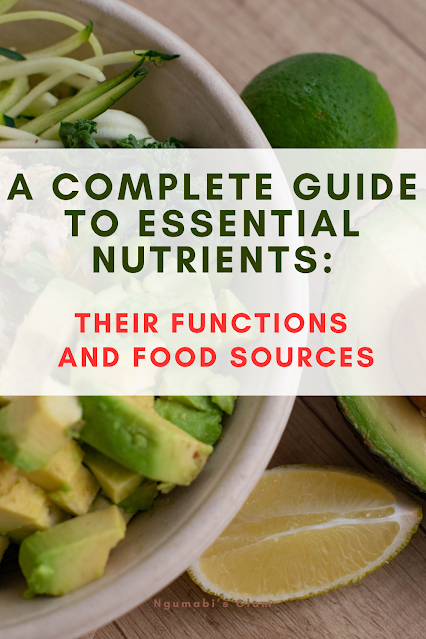10 Dessert Hacks for Weight Loss That Actually Work (Nutritionist-Backed Tips)
Let’s be honest—giving up dessert entirely sounds like punishment, not a sustainable plan. For many of us, sweets are a little slice of joy. The good news? You don’t have to ditch dessert to stay on track with your weight loss goals. You just have to get smarter about how you indulge.
I’ve gathered 10 simple dessert hacks that nutritionists actually recommend—and they’re realistic enough to stick with. These aren’t just “swap this for that” tips. They’re small shifts that can help you enjoy sweet treats without overdoing it or feeling guilty.
Whether you're meal-prepping for the week, baking for your kids, or just trying to make healthier choices, these hacks can help you find balance.
🍌 1. Sweeten Naturally with Fruit
Instead of adding refined sugar to everything, try using fruits like bananas, dates, apples, and berries. They're naturally sweet, loaded with fiber, and come with antioxidants your body actually needs.
I often freeze overripe bananas and blend them into “ice cream” or add chopped dates to oatmeal cookies. The flavor hits differently when you know it’s doing something good for your body too.
🍮 2. Practice Portion Mindfulness
Dessert isn't the problem—overdoing it is. Try serving sweets in small bowls, jars, or muffin tins to help keep portions in check. You’ll still feel satisfied, just without the sluggishness afterward.
Sometimes, I bake mini banana muffins in silicone trays and freeze half. That way, I enjoy one or two without eating the whole batch in a day (yes, it’s happened).
🍫 3. Choose Dark Chocolate (At Least 70%)
A couple of squares of good-quality dark chocolate can hit the spot. It’s lower in sugar and rich in antioxidants. Plus, it’s intense enough that a little goes a long way.
When I feel the need for something indulgent, I melt some dark chocolate and dip strawberries or dates into it. It feels luxurious but totally doable.
🌾 4. Swap Regular Flour for Smarter Alternatives
Using almond flour, coconut flour, or oat flour in your baking can give your treats a fiber and protein boost while reducing the refined carbs. These alternatives also have more texture and flavor.
If you're not ready to fully switch, try replacing just half of the all-purpose flour with a healthier option. Small steps still count.
🧁 5. Use Greek Yogurt or Applesauce Instead of Oil
In muffins, cupcakes, or cakes, unsweetened applesauce or plain Greek yogurt can replace a big chunk of the fat. They keep desserts moist while trimming calories and adding nutrition.
I’ve used Greek yogurt in pancakes and applesauce in banana bread—it’s a game-changer.
🥣 6. Add a Boost of Protein
Adding protein to your dessert doesn’t just help you stay fuller—it also slows the sugar rush. Blend some protein powder into your brownies or smoothies, or stir it into yogurt.
This works especially well for post-workout snacks. A protein-rich chocolate smoothie with banana and peanut butter is one of my go-tos.
⚖️ 7. Measure—Don’t Eyeball
When you're trying to manage your intake, portion sizes matter. A tablespoon of peanut butter is easy to overdo unless you measure. A small scale or proper measuring spoons can make all the difference.
I learned this the hard way after thinking my “one scoop” of almond butter was harmless…until I realized I was tripling it.
🍓 8. Skip Frosting—Top with Berries
Instead of buttercream or sugary toppings, go for fresh fruits. Berries are especially great—they’re low in calories but big on flavor, antioxidants, and fiber.
I like layering Greek yogurt with berries and granola to make a quick parfait. It looks and tastes like a fancy dessert but keeps me on track.
🥑 9. Use Healthy Fats like Avocado or Coconut Oil
Not all fats are bad. Avocados and coconut oil offer healthy fats that leave you feeling fuller and more satisfied. Avocado works surprisingly well in chocolate mousse or brownies.
It might sound weird at first, but avocado-based desserts have earned a permanent place in my kitchen.
❄️ 10. Freeze Dessert in Portions
One of the easiest ways to prevent overeating is by freezing your treats. Portion individual slices or muffins, and freeze what you won’t eat that day. It makes it easier to enjoy dessert in moderation without the temptation of a full tray.
Plus, it’s such a time-saver. pull out a frozen homemade cookie or banana muffin when you want something sweet—no fuss, no guilt.
✨ Bonus: Make Healthy Desserts Visible
We’re more likely to eat what we see. Keep healthier treats within easy reach and hide the less nutritious options. It’s a small mental trick, but it works wonders—especially when you’re tired and reaching for a snack without thinking.
The idea of giving up dessert forever just isn’t sustainable for most of us—and it doesn’t have to be. You can enjoy sweet treats while still working toward your weight loss goals. With a few swaps and a little mindfulness, dessert can be part of a balanced, happy life.
The goal isn’t to be perfect—it’s to be consistent. Choose better ingredients, control your portions, and give your body what it actually needs. You’ll feel better, and you won’t feel deprived.
Which of these hacks do you already use? Or which one will you try first?
.png)






.png)




















